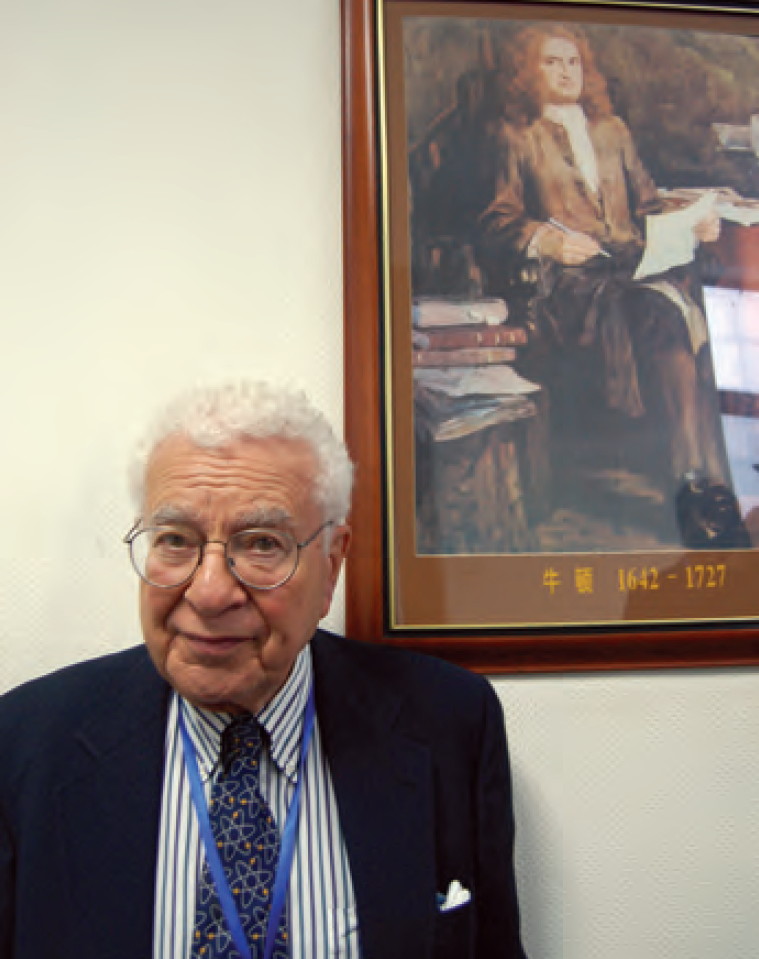
Murray Gell-Mann posing with a painting of Isaac Newton Science Hall, Beijing China, October 2007. (Photo by K. Frazier)
Gell-Mann helped develop the “standard model" of particle physics. He introduced the concept of quantum “strangeness.” He brought order to the world of subatomic physics by grouping all particles into eight characteristics, a system he named the “Eightfold Way.” To account for these characteristics, he came up with the then-revolutionary idea of particles with fractional electric charge, and he called them “quarks,” a name he whimsically took from James Joyce’s Finnegans Wake. Experiments subsequently confirmed the existence of quarks. His 1969 Nobel Prize citation read: “For his contributions and discoveries concerning the classification of elementary particles and their interactions.”
Gell-Mann, born in New York City in 1929, was a child prodigy. He received his PhD at MIT in 1951 and spent most of his research career at Caltech. He was known for his range and depths of interests and knowledge. Late in his career he moved to Santa Fe and in 1984 helped found the Santa Fe Institute (SFI), where scientists from many disciplines study frontier topics surrounding the idea of complexity, a concept common to fields including biology, ecology, sociology, and computer science.